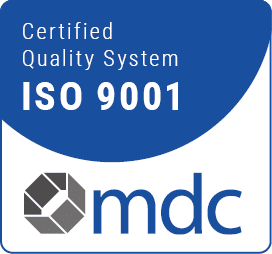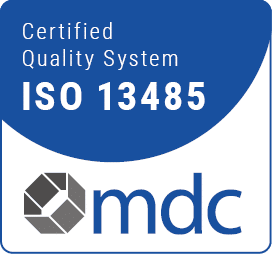Erosion due to cavitation in ultrasonic baths #
Cavitation
Ultrasonic oscillating systems attached to the oscillating tank of an ultrasonic bath convert high-frequency electrical energy into mechanical oscillations and cause the bath fluid to oscillate at a predetermined frequency (in the range of 20 to 50 kHz). This creates negative pressure zones in the liquid in which tiny vacuum bubbles form and implode again. This process is called cavitation.
Erosion due to cavitation
In principle, cavitation attacks all materials. At the interface - solid/liquid - the cavitation bubbles attack the surface at the weak points of the solid (for example grain boundaries of the crystalline metal structure). This is called cavitation erosion and varies in intensity depending on the material.
Parts exposed to ultrasound are subject to cavitation during the short sonication time. This achieves the desired positive effect without attacking the surface of the material to be sonicated. The surface of the oscillating tank (especially the sound-emitting surface), on the other hand, is exposed to cavitation over a long period of time. Cavitation erosion can become visible after only a few hours of operation.
To prevent rapid wear of the oscillating tank, BANDELIN uses stainless steel for the manufacture of its ultrasonic oscillating tanks. This has been proven to have the most favourable properties against cavitation attack. Stainless steel is a steel alloyed with at least 12 % chromium and other metallic additives such as nickel, molybdenum, etc. The chromium alloy protects against premature cavitation attack and the service life of the sound-emitting surfaces is significantly increased.
Other factors influencing cavitation erosion on the surfaces of the oscillating tank are:
- Properties of the liquid used
- Aggressive bath fluid (e.g. salt solutions, certain acids and alkalis in various concentrations).
- Demineralised water (VE water) without additives
- Concentration of the preparation (observe the dosage prescribed by the manufacturer!)
- Temperature and gas content of the liquid
- Contamination by metal chips, grains of sand, abrasives or metal dusts or by chemical substances such as oils, greases, etc.
- Aggressive contaminants such as acids, salts and chloride ions
- Chemicals that contain or release chloride ions (some disinfectants, household cleaners and dishwashing detergents).
- Sounding method
Use appropriate accessories for the application, avoid direct contact with the tub floor.
Literature:
/1/ Prof. Dr. R. Pohlmann et al: On ultrasonic cavitation processes on solid surfaces.
Research Reports of the State of North Rhine-Westphalia No. 1444, (1965).
/2/ Ultrasonic cleaning. Galvanotechnik, Saulgau 69 (1978)10, p. 921.
All information is based on the current state of our knowledge, but does not constitute a guarantee of product characteristics and does not establish a contractual legal relationship.






